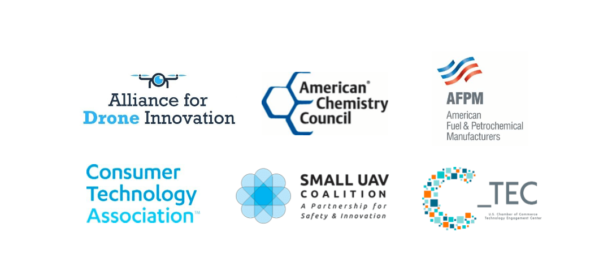Section 2209 of the FAA Extension, Safety and Security Act of 2016 (the Act) hasn’t been implemented yet. But a group of drone industry advocates urge the FAA to act quickly, in a letter sent to the FAA.
Section 2209 was designed to provide some authorities, such as state governments, with a process to apply to the FAA to restrict the airspace over certain fixed infrastructure. The process would apply a risk-based approach to determining whether an airspace restriction over the fixed infrastructure was necessary and appropriate – and put the responsibility for restricting the airspace with the FAA, which claims authority over the airspace.
While the Act of 2016 called for Section 2209 to be defined within 6 months of the enactment of the Act, the FAA says that a Notice of Proposed Rulemaking on the topic won’t appear until 2021 – two years past the deadline.
Why it Matters
It may seem that drone industry advocates should not be in a hurry to see airspace restrictions over critical infrastructure put into place. But advocates say that in the absence of a reasonable process at the federal level, state and local governments have stepped in to protect local infrastructure with airspace restrictions of their own. These local restrictions may or may not meet the FAA’s risk-based criteria for airspace restrictions.
“…many of the proposed state and local UAS airspace restrictions are much broader than what Congress set forth in Section 2209,” says the group’s letter to the FAA. “Section 2209 limits UAS operating restrictions to the airspace above critical infrastructure and similar areas with unique, highly sensitive safety and security concerns. In contrast, many state laws and bills establish UAS no- fly zones over more mundane areas such as airspace above parks, animal feeding stations, state government buildings, mental health facilities, and television stations.”
These local regulations, if challenged, may not prove legal: but as they proliferate, they limit legitimate commercial operations and make it difficult for commercial operators to navigate regulations.
“While not only preempted by federal airspace sovereignty, as well as the direct language of 2209, these efforts create an unworkable patchwork of prohibitions that impacts UAS operators’ access to airspace and thus should be addressed expeditiously,” says the letter.
Text of the letter, edited to exclude footnotes. The full and unedited text can be found here.
October 22, 2020
Via e-mail
The Honorable Steve Dickson Administrator
Federal Aviation Administration 800 Independence Ave., S.W. Washington, DC 20591
Re: Implementation of Section 2209
Dear Administrator Dickson:
The undersigned organizations urge the Federal Aviation Administration (“FAA”) to expeditiously adopt a process that would allow certain parties to petition the FAA to adopt operational restrictions based upon specific, risk-based operational criteria that would apply to unmanned aircraft systems (“UAS”) in the airspace above or adjacent to certain fixed site facilities. Although the FAA has committed to issuing a Notice of Proposed Rulemaking on this subject by February 2021 , this is still two years beyond the deadline directed by Congress in Section 2209 of the FAA Extension, Safety, and Security Act of 2016, as amended.
The tremendous growth of the UAS industry prompted many state and local policymakers to enact legally questionable UAS operating restrictions around many different types of facilities, some of which directly challenge the federal sovereignty of the National Airspace System. In response to those efforts, Congress enacted Section 2209, which directs the Secretary of Transportation to establish a process for applicants to petition the FAA to establish UAS operational restrictions over “fixed site facilities,” such as critical infrastructure. The statute specifies that petitions would be evaluated based on aviation safety, national/homeland security, and the need to protect persons and property while creating a predictable operating environment for UAS. Congress mandated that this process be established within six months of enactment.
It has been four years since enactment of Section 2209 and the process for accepting and evaluating petitions to establish these airspace designations has yet to be established. During this period, states and localities have stepped into the void. In fact, since Section 2209 was enacted in 2016, at least 24 states have adopted laws imposing restrictions on UAS operations over impacting the public’s right to access navigable airspace and putting operators at risk of local critical infrastructure and airports. Numerous localities also have enacted similar restrictions, prosecution even when flying in accordance with FAA regulations. The FAA should explicitly preempt these laws and promptly establish the process mandated by Section 2209 to provide a framework for determining whether operational restrictions should be established and if so, when, where, and under what specific conditions. Some state legislation references the existence of Section 2209, but the years-long delay in implementing a federal framework frustrates those good faith efforts.
https://dronelife.com/2020/10/23/section-2209-isnt-familiar-to-most-drone-operators-but-advocates-urge-the-faa-to-comply-with-it/
 Unmanned Aerial Vehicle The latest drone news
Unmanned Aerial Vehicle The latest drone news



